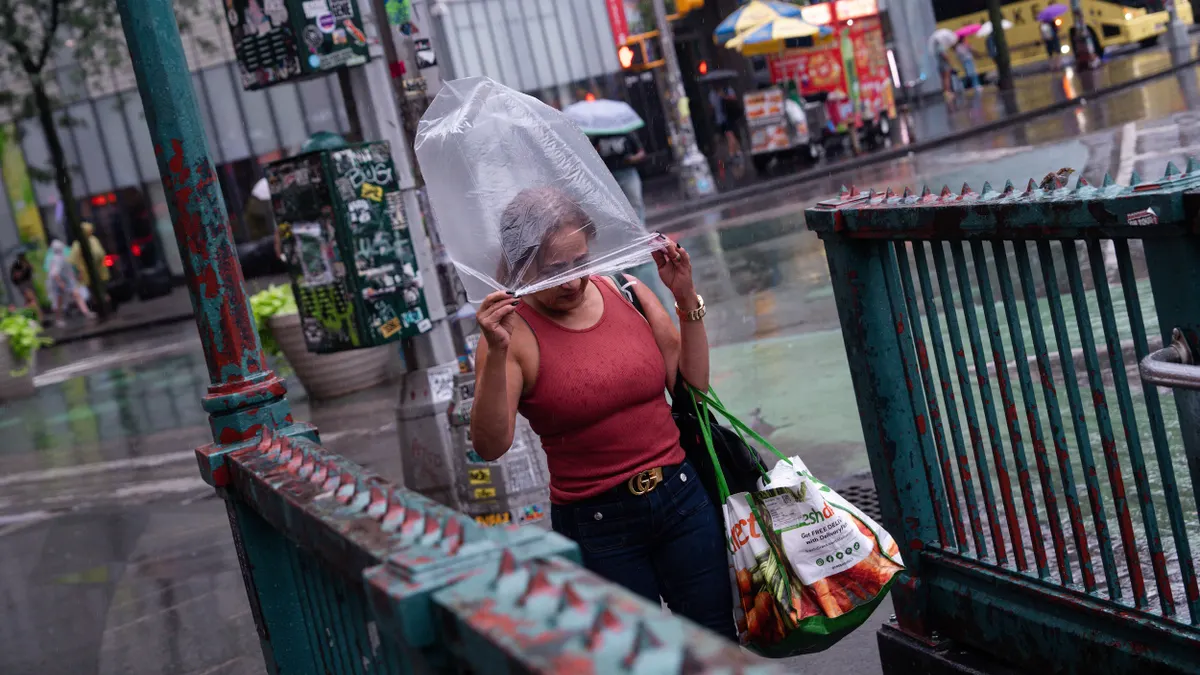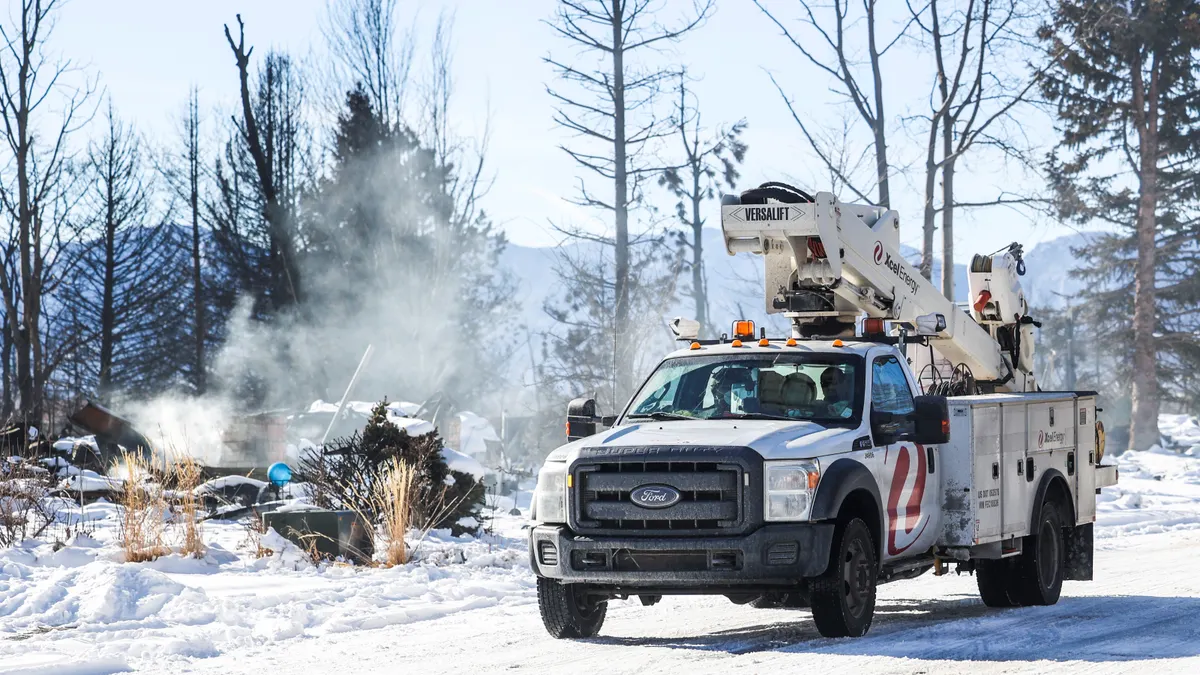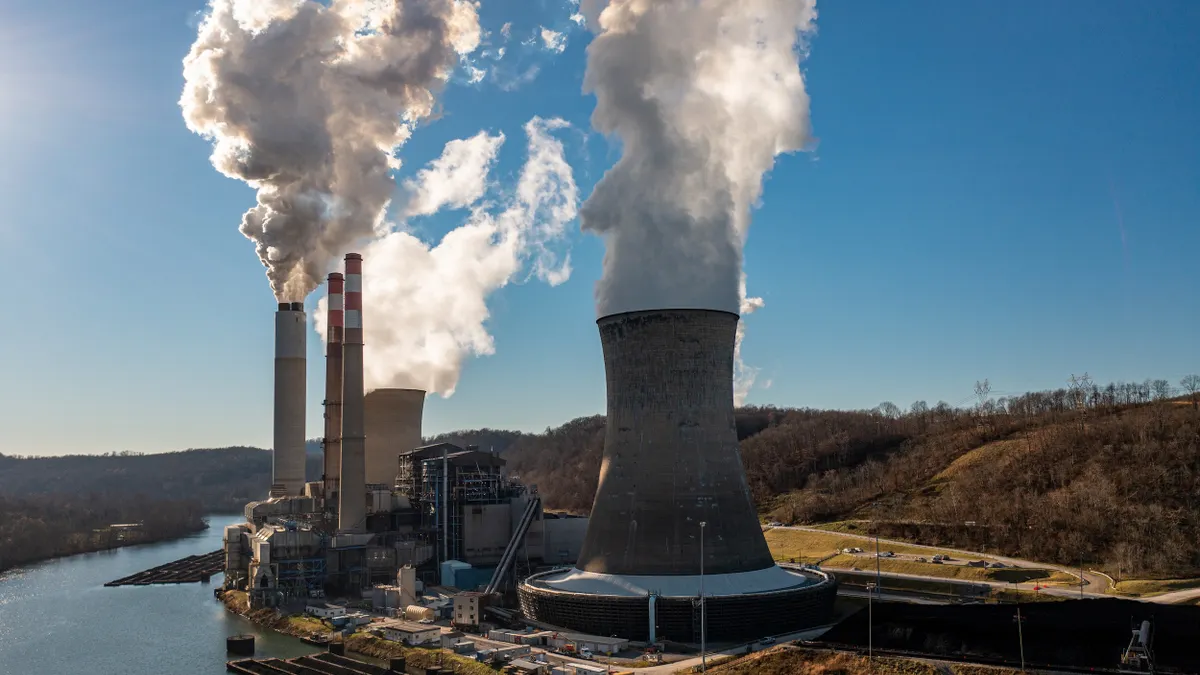District energy systems — networks of underground pipes carrying steam or water among nearby buildings — have for decades heated and, in some cases, cooled, institutional campuses, military bases and densely built urban environments around the world.
These systems often use central cogeneration plants that burn fossil fuels or biomass to generate heat. But a new generation of district underground heating and cooling networks known as thermal energy networks is poised to break that mold in the U.S. as more cities experiment with low-carbon systems.
The U.S. Department of Energy gave such efforts a big leg up last year, awarding 11 communities a total of $13 million to design community-scale thermal energy networks. The DOE-funded proposals will draw heat energy from sources like municipal wastewater and the ground itself, rather than from combustion. One in Framingham, Massachusetts, hopes to connect to a networked geothermal system that since June has served a mix of municipal buildings, small businesses and one- to two-family homes.
Proponents envision a not-too-distant future in which thermal energy networks emerge as a safer, more efficient alternative to utility gas service, reducing local air pollution and planet-warming greenhouse gas emissions in the process.
“We want to show people as quickly as possible that this is pretty much an ‘anywhere’ technology … that makes sense where the gas system makes sense,” said Zeyneb Magavi, executive director of Heet, a nonprofit involved with the Framingham project.
Challenges to widespread thermal energy network deployment remain, however, including difficulties in designing “replicable” systems that can be readily customized for specific sites, Magavi said. Thermal energy network proponents also still have work to do to educate customers, city planners and other stakeholders about the scope of the opportunity, she added.
“[This is] one of our largest energy resources, and it’s totally untapped,” she said.
A variety of potential heat sources
Thermal energy networks use electricity to move heat from one place to another, meaning that the buildings these systems serve no longer need to burn fossil fuels on-site for space and water heating. On average, thermal energy networks operate six times more efficiently than electric baseboard heating and three times more efficiently than air-source heat pumps, according to a fact sheet shared by Clean Energy Economy for the Region, or CLEER, the lead organization on a DOE-funded thermal energy network proposal in Carbondale, Colorado.
Most of the DOE-funded designs will draw heat energy from the ground, taking advantage of near-constant subsurface temperatures to transfer heat into, out of and among homes and businesses. But thermal energy networks can also exchange heat with surface water — like Lake Ontario, whose cold depths supply Toronto’s extensive district cooling network — and sources of waste heat, such as sewage, Magavi said.
“[Thermal networks] provide the infrastructure to access the massive thermal resources all around us,” she said.
A DOE-funded design in Duluth, Minnesota, will use wastewater effluent as the heat source for a hot-water network serving commercial, multi-unit residential, hotel, entertainment and light industrial buildings on a busy corridor near the city’s waterfront, said Luke Gaalswyk, president and CEO of Ever-Green Energy, the engineering consultant for the project.
A system of heat pumps and heat exchangers will increase the temperature of the water loop from 85 to 90 degrees Fahrenheit to 180 degrees F. The heated water then runs through a district loop that network customers can tap for space heating, domestic hot water heating and melting snow on sidewalks and driveways, according to Gaalswyk.
Each network customer has an on-site heat exchanger that transfers heat from the district loop to a building loop and back to the district loop. The district loop then returns the cooler water to the central wastewater plant to restart the cycle, Gaalswyk said.
The Duluth network is designed to meet its customers’ anticipated heating loads using wastewater heat alone, Gaalswyk said. In contrast, the Carbondale design uses a hybrid approach that supplements a ground-source loop with heat generated by gas-powered boilers and a solar thermal energy system — which concentrates the sun’s energy to produce heat — during peak demand periods, said Jon Fox-Rubin, innovation manager at CLEER. Using multiple heat sources allows the operation of a smaller geothermal system, which saves money, he said.
Potential heating cost, emissions reduction benefits
Widespread deployment of thermal energy networks could result in cost savings for residents, proponents say. An average-sized Massachusetts home using networked geothermal spends $420 to $620 annually on heating, compared with $1,040 to $1,120 annually for average-sized homes using gas furnaces, the Applied Economics Clinic said in a 2021 study prepared on behalf of Heet.
Further, by eliminating on-site fossil fuel combustion and improving local air quality, thermal energy networks can ease environmental burdens in communities that historically have borne the brunt of air pollution from industry, transportation and other sources.
The initial scope of an Environmental Protection Agency-funded design in New Haven, Connecticut, covers the city’s bustling central train station and up to 1,000 units of mixed-income housing planned nearby. In the long run, the city may extend the network to the Hill, a lower-income neighborhood immediately adjacent to the train station that has above-average rates of asthma, cancer and heart disease, said Steven Winter, New Haven’s executive director of climate and sustainability.
Reducing pollution is a guiding principle for Heet as it works on the second phase of the Framingham network and designs projects in several other working-class Massachusetts communities, said Andrew Iliff, the group’s director of national networks.
Building buy-in
Growing public awareness of the health benefits of decarbonization could help drive the deployment of thermal energy networks at the scale needed to phase out utility gas networks, allowing gas utilities to evolve rather than go out of business, proponents of the systems say.
Some utilities welcome these efforts, Magavi said. The gas sales team at Eversource, which serves Framingham, was hooked after just one weekend of outreach to sign up customers for the system that went live in June, she said.
“We changed the group’s whole name [from] ‘gas sales and marketing’ [to] ‘customer thermal solutions,’” said Eversource Vice President of Clean Technologies Nikki Bruno. Only one prospect — who’d just installed a new HVAC system — turned them down, she added.
“Operating, constructing and maintaining an underground geothermal network has a lot of parallels to what our industry and our employees do every day,” Eversource President of Gas Operations Bill Akley said in June at a ribbon-cutting event for the Framingham pilot.
City governments can facilitate thermal energy networks’ deployment — and enhance their eventual viability — by collaborating with other municipal and nonprofit groups that have successfully implemented them, New Haven’s Winter said.
Winter’s team has consulted with project leaders from Yale University, which is planning its own networked geothermal system to serve parts of its New Haven campus, and the Meriden Housing Authority in nearby Meriden, Connecticut, which has already deployed one, he said.
Close collaboration between cities and project developers, including utilities like Eversource, can alleviate city employees’ workloads during construction, Bruno added. Eversource conducted extensive community engagement while preparing for and building out the recently constructed Framingham system, going so far as to set up a tent at the worksite on Wednesday evenings, she said.
“Our mantra to [the] city was, ‘Make sure Eversource gets complaints first, so they’re not flooding the mayor’s office,’” Bruno said.
By the end of this year, DOE plans to release a “Pathways to Commercial Liftoff” report on utility- and community-scale geothermal networks, said Alexis McKittrick, program manager for hydrothermal resources and low-temperature and coproduced resources at DOE’s Geothermal Technologies Office.
“These systems are out there now, they are scalable, and they can be adapted to different geographies, different communities,” McKittrick said. “[They] can be configured for whatever your building mix and scale looks like.”


















